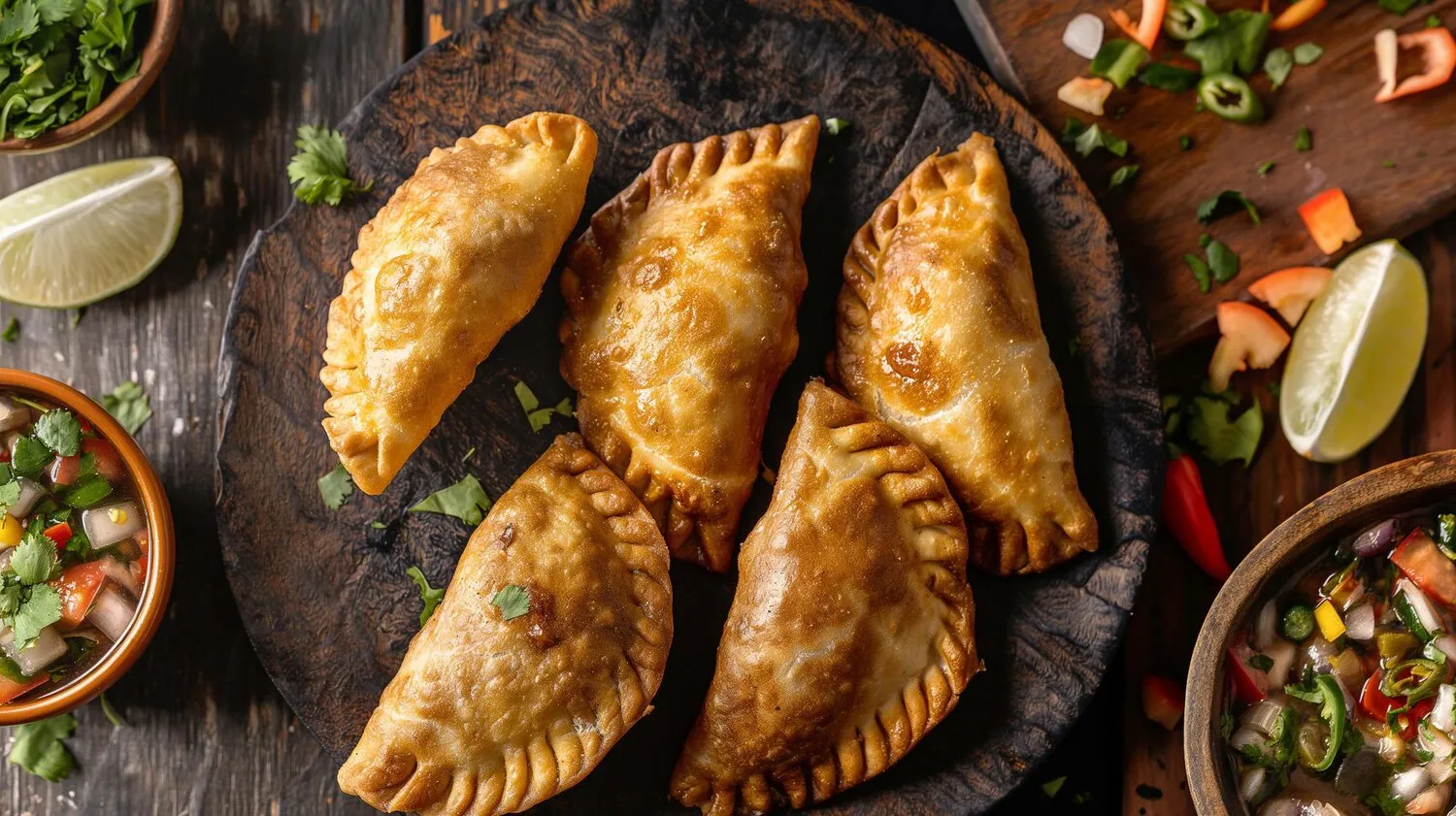
Arepas
Venezuelan style. Options include various fillings.
Nutrition Facts
* The % Daily Value (DV) tells you how much a nutrient in a serving of food contributes to a daily diet. 2,000 calories a day is used for general nutrition advice.
Arepas have pre-Columbian origins, dating back to the indigenous peoples of the northern part of South America, including present-day Venezuela and Colombia. They were a staple food long before European colonization, made from ground corn and cooked on a clay griddle. The name 'arepa' is believed to derive from the indigenous word 'erepa' for corn.
Arepas are a fundamental part of Venezuelan culture and cuisine, deeply ingrained in daily life and celebrations.
Daily Staple
Arepas are a common breakfast, lunch, or dinner item, eaten at home, in restaurants, and from street vendors. They are a quick and affordable meal for many Venezuelans.
Regional Variations
Different regions of Venezuela have their own variations of arepas and fillings. For example, arepas in the Andes region might be made with wheat flour instead of corn flour.
Social Gathering Food
Arepas are often served at parties and gatherings, where people can customize their fillings and enjoy a communal meal.
Symbol of Venezuelan Identity
For many Venezuelans living abroad, preparing and eating arepas is a way to connect with their homeland and preserve their cultural heritage.
Arepas themselves have a mild, slightly sweet corn flavor. The fillings are where the real flavor explosion happens, ranging from savory and rich to fresh and vibrant.
The flavor profile of an arepa depends heavily on the filling. Common fillings include shredded beef (carne mechada), shredded chicken (pollo mechado), black beans (caraotas negras), cheese (queso), ham, avocado, and reina pepiada (chicken salad with avocado and mayonnaise). Each filling brings its unique taste and texture, creating a diverse range of flavor combinations. The arepa itself provides a subtle corn flavor that complements the richness or freshness of the fillings.
Dough Consistency
The dough should be moist but not sticky. If it's too dry, it will crack when forming the arepas. If it's too wet, they will be difficult to cook evenly.
Pre-cooked Corn Flour
Always use pre-cooked corn flour (masarepa or harina PAN) specifically designed for making arepas and other Latin American dishes. Regular corn flour will not work.
Cooking Method
Cook the arepas on a lightly oiled griddle or pan over medium heat until golden brown and slightly puffed up on both sides. Then, finish cooking them in the oven or by simmering them in water to ensure they are cooked through.
Resting the Dough
Let the dough rest for at least 5 minutes after mixing to allow the corn flour to fully absorb the water, resulting in a smoother texture.
Explore additional Venezuelan dishes and restaurants
Explore VenezuelanDiscover top dining spots and culinary experiences in Nice.
Explore NiceLearn more about the food culture, restaurant scene, and culinary heritage of France.
Explore France